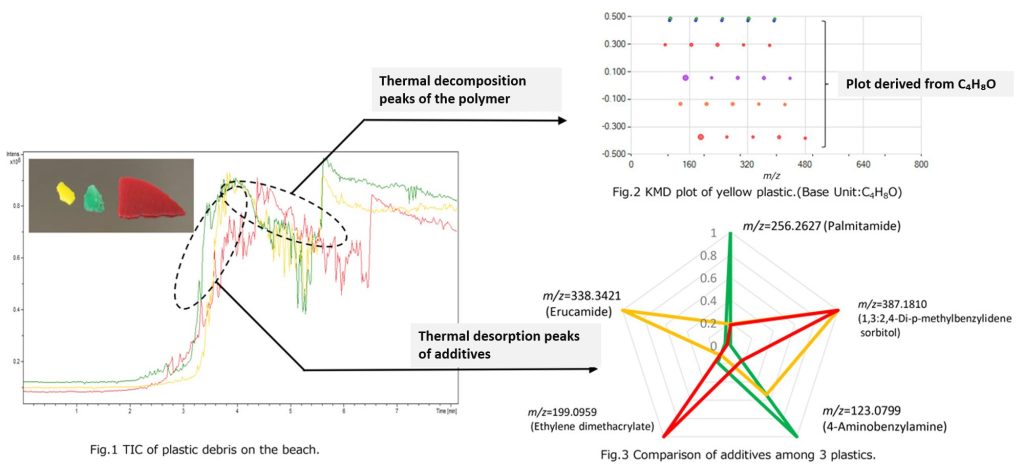Analysis of Marine Plastic Waste
Purpose
Plastic found on the beach was analyzed, and methods for identification were explored using ChemZo and Spectra Scope. The potential for determining the origin of plastic waste was demonstrated.
Methods
| Ion Source | ChemZo (BioChromato) |
| Mass Spectrometer | compact QTOF (Bruker) |
| Measurement Method | Three types of plastics (yellow, green, and red) with a weight of 1.2 mg each were heated from room temperature to 600°C, and mass spectrometry (MS) was performed during the heating process. |
| Data Processing | Monomer evaluation was performed using Spectra Scope’s Polymer Engine, and differential analysis of additives was conducted using IDS. |
Results
Fig. 1 shows the TIC obtained during the measurement. Peaks attributed to additives were observed around 3-4 minutes (200-300°C), while thermal degradation products of the plastics appeared around 4-5 minutes (300-400°C). The results from Polymer Engine revealed that all three types of plastics exhibited a repeating structure of C₄H₈O. (Fig. 2) It was difficult to identify distinct features from the plastic monomers alone; however, IDS allowed for the extraction of characteristic components, and a radar chart revealed distinctive differences in the additive content. (Fig. 3) The extracted components were searched using Compound Search, and their structures were estimated.

